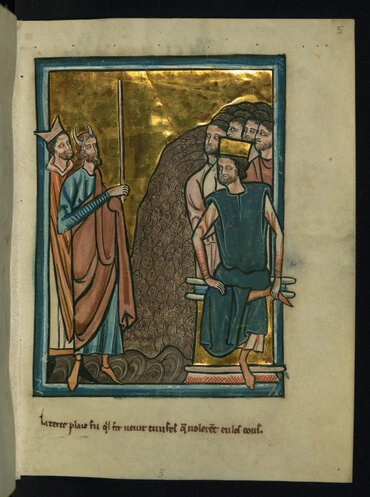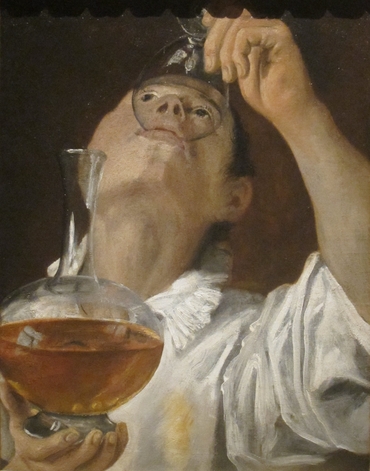Aaron

Aaron was the brother of Moses. He symbolizes two things, at different stages of the story.
During the first part of the exodus, when he was Moses' spokesperson, Moses represents the Word as it truly is, as it is understood in heaven, while Aaron represents the Word in its external sense, as it is understood by people in the world. This is why Aaron talks for Moses, and the Lord says of him "he shall be as a mouth for you, and you shall be to him as God." (Exodus 4:16)
Later, after the Tabernacle was built and he was inaugurated as high priest (see Leviticus 8,9), Aaron represents the Lord as to the Divine Good, and Moses represents the Lord as to the Divine Truth.
In Exodus 28:1, Aaron signifies the conjunction of Divine Good with Divine Truth in the Divine Human of the Lord. (Arcana Coelestia 9806, 9936)
In Exodus 32:1, Aaron represents the external of the Word, of the church, and of worship, separate from the internal. (Arcana Coelestia 10397)
In Exodus 4:14, before he was initiated into the priesthood, Aaron represents the doctrine of good and truth. (Arcana Coelestia 6998)
Drink

Food in the Bible represents the desire for good, and water and other drinks represent the understanding and true ideas we need to recognize what good is and how to bring it into being – or simple "truth," as Swedenborg puts it. When people (or animals) in the Bible drink, then, it represents learning true things and internalizing them so they can be used. In the contrary sense it can mean taking in false ideas instead, and allowing them to pollute the mind. When a person drinks clean water, it represents getting simple, external ideas from the Bible. Drinking good wine represents learning the deeper spiritual ideas that lie within the stories of the Bible. This is why Jesus said to the Samaritan woman that the water He gave would be a "well springing up to everlasting life" (John 4:14). The details of the instruction can also vary depending on who or what is drinking. When Rebekah gives water to the camels of Abraham's servant (Genesis 24) this means instruction about known facts from the Bible to the external part of the mind. When Jacob waters Laban's flock of sheep (Genesis 29), this means instruction from doctrine about loving what is good.






